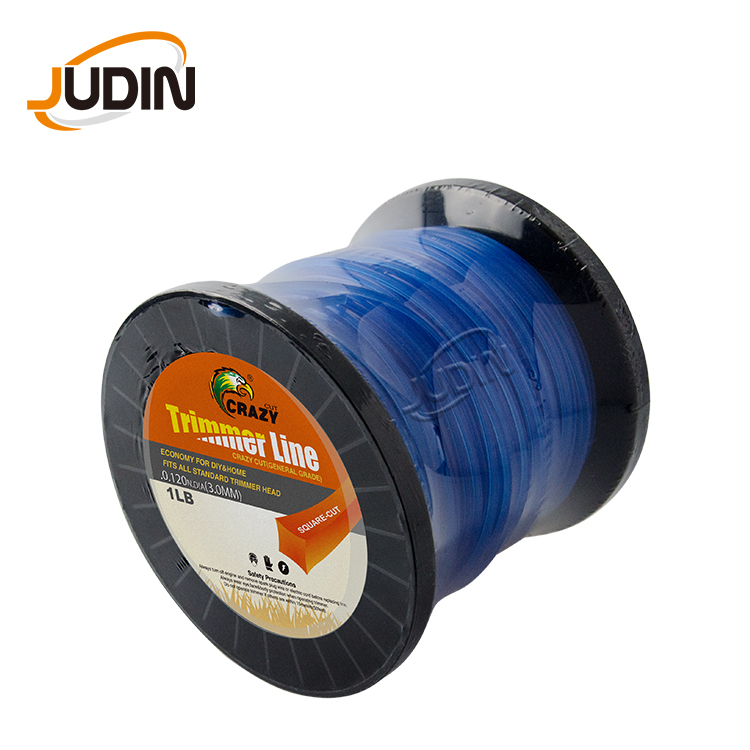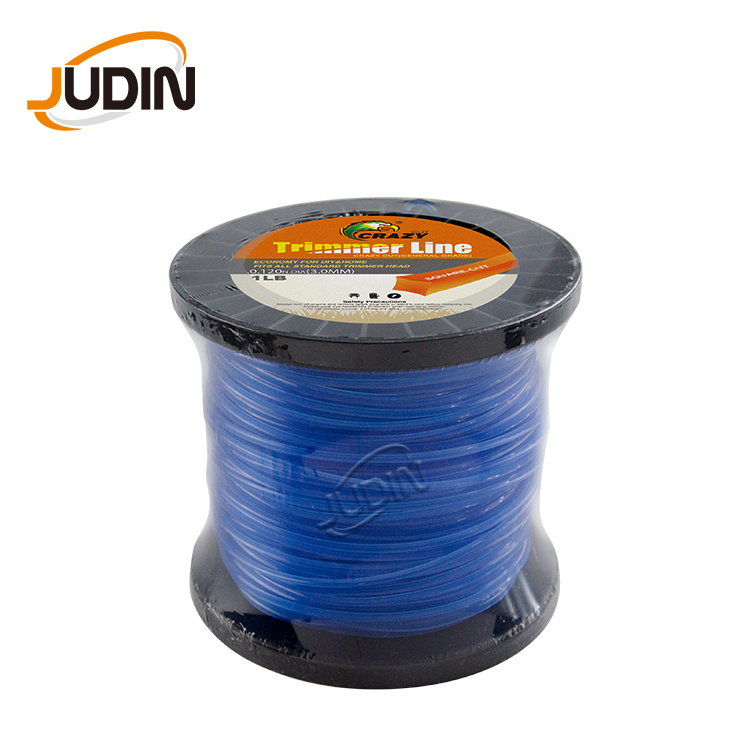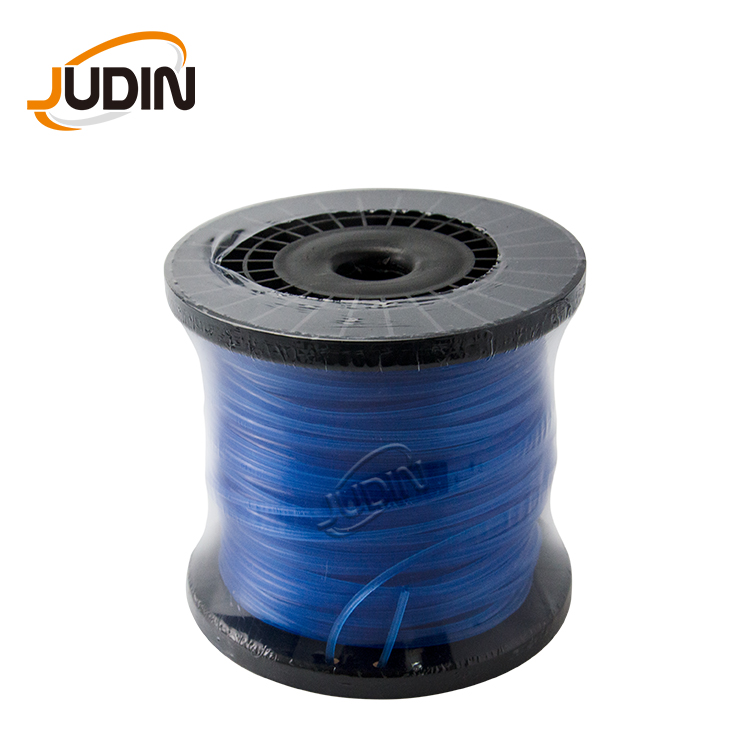If you’re looking for a way to get sharp, clean edges on your lawn, a square trimmer line might just be your best friend. Its unique design slices through grass and weeds like a pro. Plus, it’s tough enough to handle those tricky spots around fences or sidewalks.
Key Takeaways
- Square trimmer lines cut grass neatly, so edges look better.
- They last longer and work well near hard surfaces.
- Picking the right size and type makes trimming quicker and simpler.
What Makes Square Trimmer Lines Unique?
Differences Between Square, Round, and Twisted Trimmer Lines
When it comes to choosing the right trimmer line, you’ve got options. The three main types—square, round, and twisted—each have their own strengths. But what sets them apart?
- Round Trimmer Lines: These are the most common and are great for light-duty tasks. They’re smooth and easy to handle, but they might struggle with thicker grass or weeds. If you’re just trimming around flower beds or small areas, round lines can do the job.
- Twisted Trimmer Lines: These are a step up in performance. Their twisted design reduces noise and vibration, making them a quieter option. They’re also more durable than round lines, but they still don’t match the cutting power of square lines.
- Square Trimmer Lines: Now, this is where things get exciting. Square lines, like the JUDIN Square Trimmer Line, are designed for precision. Their sharp edges slice through grass and weeds with ease. They’re perfect for tougher jobs, like edging along sidewalks or cutting through thick patches of grass. Plus, they’re more durable, so you won’t have to replace them as often.
Each type of trimmer line has its place, but if you’re after cleaner edges and better performance, square lines are hard to beat.
How the Square Shape Enhances Cutting Precision
The secret to the square trimmer line’s cutting power lies in its shape. Unlike round lines, which tend to tear through grass, square lines actually cut it. The sharp edges act like tiny blades, slicing through each strand cleanly. This means you’ll get a more polished look with fewer passes.
You’ll also notice the difference when tackling tougher spots. Whether you’re trimming along a fence or around a tree, the square shape gives you more control. It grips the grass better, so you won’t have to go over the same area multiple times. This not only saves you time but also reduces wear and tear on your trimmer.
Another bonus? Square lines are more rigid than their round counterparts. This added stiffness helps them maintain their shape, even when they’re up against hard surfaces like concrete or brick. So, you can edge your lawn with confidence, knowing your trimmer line won’t snap or wear out too quickly.
In short, the square shape isn’t just a design choice—it’s a game-changer. It’s what makes square trimmer lines the go-to option for anyone who wants a cleaner, more professional-looking lawn.
Benefits of Using Square Trimmer Lines
Superior Cutting Efficiency for Cleaner Edges
You want your lawn edges to look sharp and professional, right? Square trimmer lines make that possible. Their unique shape slices through grass and weeds with precision. Unlike round lines that tear at the grass, square lines cut cleanly. This means fewer passes and a smoother finish.
Imagine trimming along a sidewalk or driveway. The sharp edges of the square trimmer line grip the grass better, giving you more control. You’ll notice how effortlessly it handles thick patches of grass or stubborn weeds. Cleaner edges don’t just look great—they also make your lawn easier to maintain over time.
Increased Durability for Tough Surfaces
Ever had your trimmer line snap when working near concrete or fences? That’s frustrating. Square trimmer lines, like the JUDIN Square Trimmer Line, are built to last. Their rigid design holds up against hard surfaces, so you can trim confidently without worrying about frequent replacements.
Whether you’re edging around a patio or tackling rough terrain, the durability of square lines saves you time and money. You won’t have to stop mid-task to replace a broken line. Plus, their wear resistance means they stay effective longer, even with heavy use.
Time-Saving and Effort-Reducing Features
Square trimmer lines don’t just cut better—they work smarter. Their sharp edges and durability mean you’ll spend less time going over the same area. You’ll finish your lawn care faster and with less effort.
Think about how much easier it is to trim when your equipment works efficiently. Square lines reduce strain on your trimmer, making it easier for you to handle. You’ll get the job done quicker, leaving you more time to enjoy your perfectly edged lawn.
How to Use Square Trimmer Lines Effectively
Selecting the Right Size and Material for Your Trimmer
Choosing the right square trimmer line is the first step to getting the best results. You’ll want to match the line’s size and material to your trimmer and the type of work you’re doing.
- Size Matters: Trimmer lines come in different diameters, ranging from thin to thick. For light-duty tasks like trimming grass, a thinner line (around 1.3mm) works well. If you’re dealing with thicker weeds or edging along hard surfaces, go for a thicker line (up to 4.5mm). Check your trimmer’s manual to see what sizes it supports.
- Material Makes a Difference: High-quality materials, like 100% nylon, offer better durability and performance. The JUDIN Square Trimmer Line, for example, is made from premium nylon, ensuring it lasts longer and resists wear.
Tip: If you’re unsure, start with a medium-sized line. It’s versatile and works for most tasks.
Installing Square Trimmer Lines Step by Step
Installing a square trimmer line might seem tricky, but it’s actually pretty simple. Follow these steps to get it done quickly:
- Turn Off the Trimmer: Safety first! Make sure your trimmer is powered off and unplugged (or the battery is removed).
- Remove the Spool: Open the trimmer head by following the instructions in your manual. Most heads twist off or have clips you can press.
- Prepare the Line: Cut a length of square trimmer line. If you’re using pre-cut lines like those from JUDIN, you can skip this step.
- Wind the Line: Insert one end of the line into the spool’s anchor hole. Wind it tightly and evenly in the direction indicated on the spool. Leave a few inches of line sticking out.
- Reassemble the Trimmer Head: Place the spool back into the trimmer head. Pull the ends of the line through the eyelets, then close the head securely.
- Test It Out: Turn on the trimmer and check if the line feeds properly. If it doesn’t, recheck the installation.
Pro Tip: Keep extra pre-cut lines handy. They save time and make replacements easier.
Adjusting Trimmer Settings for Optimal Performance
Once your square trimmer line is installed, adjusting your trimmer’s settings can make a big difference. Here’s how to fine-tune it for the best results:
- Set the Right Speed: Use a higher speed for thick grass or tough weeds. For lighter tasks, a lower speed works just fine.
- Check the Cutting Height: Adjust the trimmer’s height to match the area you’re working on. Lower settings are great for edging, while higher settings prevent scalping your lawn.
- Inspect the Line Length: Make sure the line is the correct length. Too short, and it won’t cut effectively. Too long, and it could strain the motor. Most trimmers have a built-in cutter to trim excess line.
Note: Regularly check your trimmer line during use. If it’s worn or frayed, replace it to maintain cutting efficiency.
By selecting the right size, installing it correctly, and adjusting your trimmer settings, you’ll get the most out of your square trimmer line. Lawn care has never been easier!
Troubleshooting and Maintenance Tips
Preventing Line Breakage and Wear
Trimmer lines breaking too often? That’s a common issue, but it’s easy to fix with a few adjustments.
- Avoid Hard Surfaces: Constant contact with concrete, rocks, or fences weakens the line. Try to angle your trimmer slightly away from these surfaces.
- Check the Line Size: Using a line that’s too thin for heavy-duty tasks can cause it to snap. Always match the line diameter to the job.
- Keep the Line Conditioned: If your trimmer line feels brittle, soak it in water for 24 hours. This restores flexibility and reduces breakage.
Pro Tip: Use high-quality lines like the JUDIN Square Trimmer Line. They’re designed to handle tough conditions without wearing out quickly.
Solving Uneven Cutting Issues
Uneven cuts can ruin the look of your lawn. Here’s how to fix that:
- Inspect the Line Length: Uneven line lengths lead to inconsistent cutting. Check both sides of the spool and trim any excess.
- Adjust Your Technique: Keep the trimmer head level and move it steadily. Jerky movements can create uneven patches.
- Clean the Trimmer Head: Grass buildup can block the line’s movement. Remove debris regularly to keep the line feeding smoothly.
Quick Fix: If the problem persists, recheck the spool installation. A misaligned spool can cause uneven feeding.
Extending the Lifespan of Your Trimmer Line
Want your trimmer line to last longer? A little care goes a long way.
- Store Properly: Keep your line in a cool, dry place. Avoid direct sunlight, which can weaken the material.
- Use the Right Speed: High speeds wear out the line faster. Use just enough power to get the job done.
- Replace Before It’s Too Late: Don’t wait for the line to wear down completely. Replacing it early ensures consistent performance.
Did You Know? Pre-cut lines, like those from JUDIN, save time and reduce waste. They’re a great option for hassle-free maintenance.
By following these tips, you’ll keep your trimmer line in top shape and enjoy a perfectly manicured lawn every time!
Square trimmer lines, like the JUDIN Square Trimmer Line, transform your lawn care routine. Their precision and durability make edging effortless. By using them correctly, you’ll achieve professional results without breaking a sweat. Ready to upgrade? Try a square trimmer line today and see how it changes the way you care for your lawn!
 |
 |
 |
FAQ
How do I know which square trimmer line size to use?
Check your trimmer’s manual for supported sizes. For light tasks, use thinner lines (1.3mm). For tougher jobs, go thicker (up to 4.5mm).
Can square trimmer lines work with all trimmers?
Most trimmers support square lines, but always confirm compatibility in your manual. If unsure, medium-sized lines are a safe choice for most models.
How do I prevent my trimmer line from breaking?
Avoid hitting hard surfaces like concrete. Use the correct line size for the job. Soak brittle lines in water to restore flexibility.
Tip: High-quality lines, like JUDIN Square Trimmer Line, last longer and resist wear better!
Post time: May-20-2025







